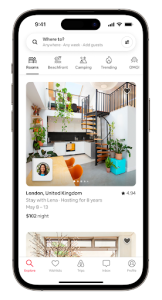- Intro
- The significance of branding in UX.
- The impact of UX on branding
- Shared elements in UX and Branding
- Testing for user perceptions
Introduction
User experience acts as the cornerstone of design and functionality, ensuring that digital products not only work seamlessly but also resonate with users on a deeper level. It’s a discipline dedicated to creating intuitive, efficient, and delightful interactions within products and services. UX designers meticulously structure every aspect of a user’s journey to ensure that the experience is smooth, user-centric, and free from usability hiccups.
Simultaneously, branding goes beyond logos and slogans, acting as the heart and soul of an organization’s identity. Branding primarily deals with portraying the identity and message of a brand, encompassing the visual and verbal elements that define an organization. It communicates promises, values, and personality.

Trust and credibility grow in users’ minds as UX and branding work together. Creating a positive user experience (UX) goes hand in hand with building a strong brand image and maintaining a consistent brand identity. UX makes products easier to use, more functional, and enjoyable, while branding acts as the storyteller, helping people recognize and form emotional connections with the brand. Together, they create a harmonious ecosystem where user trust and loyalty flourish, ultimately defining the success of a product or service.
The significance of branding in UX.
Branding isn’t just about a company’s logo; it’s about how people see the brand. This matters a lot in user experience. When users use a product or service, they form an opinion about both the brand and what’s offered. That’s where branding steps in to create an emotional response and shape how consumers view the brand. For instance, if a brand is known for being eco-friendly, it should make sure that its design, content, and messaging all reflect a commitment to sustainability and caring for the environment by incorporating practices such as Green UX.
Brand consistency is crucial for establishing trust and credibility within users. When a brand’s visual elements, messaging, and values remain constant across all touchpoints, it conveys reliability and professionalism. Users begin to perceive the brand as dependable, which is fundamental in winning their trust. Trust is not only integral to establishing brand loyalty but also to the overall user experience. Users who trust a brand are more likely to engage with its products and services positively.
There are numerous examples of brands that have successfully incorporated their brand identity into the UX. Airbnb, for example, has effortlessly incorporated its brand promise of “belonging” into the user experience of its platform. Every part of Airbnb’s UX is deliberately engineered to generate a sense of belonging, from personalized home recommendations to the platform’s encouragement of community. This not only improves the user experience but also promotes the brand’s primary message, building trust and distinguishing it from competitors.

Apple, known for its minimalist design ethos, regularly incorporates this brand identity into the user experiences of all its products. Apple’s design principles are instantly identifiable and memorable, enabling a seamless interaction between branding and UX.

The impact of UX on branding
User experience has a profound impact on shaping brand perception. When users engage with a product or service, the quality of their experience directly influences how they perceive the brand behind it. A seamless, intuitive, and pleasant UX can lead to favourable brand associations. In contrast, a frustrating or confusing UX can taint brand perceptions, as users may interpret it as a sign of negligence or indifference on the brand’s part.
The way you feel when using a product or service has a big say in what you think about the brand. If it’s easy, fun, and smooth, you’ll probably like the brand more. But if it’s complex, it might make you think twice about using it regularly. So, your experience shapes how you see the brand behind the product or service.
A seamless and delightful user experience is a potent tool for reinforcing brand values. For instance, if a brand prides itself on simplicity and efficiency, a user-friendly, streamlined UX will serve as a tangible representation of those values. Positive user experiences that resonate with brand values create a deeper emotional connection with users, strengthening their loyalty and attachment to the brand.
Creating a smooth and enjoyable experience for users is a powerful way to make your brand’s values stronger. When the UX design aligns with the brand’s core values, it amplifies the brand message. For example, if your brand is all about being simple and getting things done quickly, making the user experience easy and straightforward shows simplicity and efficiency. Good experiences that fit your brand values help people connect with your brand on a deeper level, making them like your brand more and stick with it.
Fitbit is a health and fitness brand. Fitbit’s app and wearable devices offer a user experience that seamlessly integrates into users’ health and fitness journeys. The app’s UX is intuitive, providing valuable data and insights with ease. This reinforces Fitbit’s brand values of promoting a healthy lifestyle, making users more inclined to choose Fitbit products over competitors.

Integrating UX and Branding: The Essential Roles of Visual Design and Communication
In the intersection of User Experience (UX) and Branding, two pivotal elements stand out: visual design and communication. These components act as vital bridges, merging the functional and emotional aspects of a user’s interaction with a brand.
Visual Design: The Art of Brand Storytelling
First, let’s explore visual design. It’s far more than just an aesthetic choice; it’s about narrating the brand’s story visually. This involves carefully selecting color palettes, typography, and imagery that not only appeal to the eye but also embody the brand’s essence.
Imagine navigating a website or app where every visual element harmoniously reflects the brand’s identity. This isn’t just about beauty; it’s about creating an intuitive and engaging experience that speaks volumes about the brand’s character. Visual design plays a critical role in making products not only usable but also emotionally resonant with the brand’s identity.
Communication: Crafting a Consistent Brand Voice
Communication encompasses both messaging and tone of voice. This is where a brand’s character is articulated through words. Every line of text, from user interface copy to marketing material, is an opportunity to reinforce the brand’s personality and values.
Consistency in communication is crucial. A cohesive tone and style across all user touchpoints create a seamless experience, making the brand feel more reliable and trustworthy. It’s about ensuring that every message, whether it’s a user instruction or an error alert, aligns with and reflects the brand’s ethos.
By thoughtfully merging visual design and communication, UX designers can create holistic experiences that resonate with the brand’s identity. It’s a delicate balance of form and function, where every visual and verbal element comes together to not just meet the user’s needs but also to connect with them on a brand level.
Key takeaways
- Establish Comprehensive Brand Guidelines: These guidelines serve as a blueprint, outlining the brand’s mission, fundamental values, and key visual components like color schemes, logos, and typography. Additionally, they should define the brand’s unique tone of voice. They provide a solid foundation for your design team to build upon, ensuring that every design decision aligns with your brand’s identity.

- Embrace Consistency: Consistency is the cornerstone of effective branding. Ensure that visual elements, from your color palettes to your logos, are consistently applied across all user touchpoints. This harmonious visual consistency fosters brand recognition and builds trust among your users, making your brand instantly recognizable. For example, Coca-Cola maintains a global brand consistency by using its signature red color and the iconic script font in all marketing materials and products. This consistency reinforces the brand’s identity across diverse cultures.
- Craft Brand-Consistent Messaging: The language and tone of voice in your content should seamlessly align with your brand’s personality and values. Whether it’s the content on your homepage, product descriptions, or even error messages, ensure that the messaging maintains the essence of your brand identity throughout the entire user journey. For example, Monzo uses a welcoming and community-oriented tone in all its communication. This reflects their brand’s core values of inclusivity and sharing, creating a consistent brand image.
- Leverage Visual Identity: Your brand’s visual identity, which encompasses elements like color schemes, typography, and imagery, can serve as a powerful tool in creating a cohesive and memorable user experience. Use visuals strategically to evoke the emotions and associations you want users to have with your brand. Nike’s visual identity is built around the “swoosh” logo, a symbol of speed and motion. This visual element is consistently applied in their products and marketing materials, reinforcing their brand message of empowerment.
- Keep User-Centric Design at the Core: While integrating branding, it’s crucial to prioritize the user. Your brand should enhance, not overshadow, the user experience. Always keep the user’s needs, preferences, and expectations at the forefront of your design decisions. Google’s search engine is celebrated for its user-centric design. Despite a strong brand identity, Google ensures that its branding elements never compromise the simplicity and usability of its search interface.


